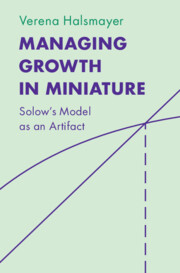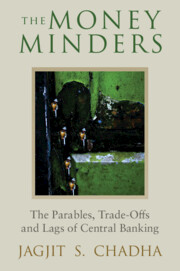Managing Growth in Miniature
Managing Growth in Miniature explores the history of the way economists think about growth. It focuses on the period between the 1930s and 1960s, tracing the development of the famed 'Solow growth model,' one of the central mathematical models in postwar economics. It argues that models are not simply 'efficient tools' providing answers to the problems of economic theory and governance. The Solow model's various uses and interpretations related not only to the ways it made things (in)visible, excluded questions, and suggested actions. Its 'success' and effects ultimately also pertained to its fundamental ambiguities. Attending to the concrete sides of economic abstractions, this book provides a richly layered and accessible account of the forms of knowledge that shaped the predominant notion of 'economic growth' and ideas of how to govern it.
- Provides a richly-layered account of how the famed “Solow model” and related forms of economic knowledge decisively shaped what we understand as 'economic growth'
- Makes rather technical issues accessible to a readership without a background in economics
- Contributes to both the history of science and the history of economics in that economic theories and ideas are firmly situated in the concrete settings of research
Awards
Winner, 2025 Best Monograph Award, The European Society for the History of Economic Thought
Reviews & endorsements
‘Our world is shaped not only by economics, but also by economic models. What are the politics of models - and how did they shape the postwar hegemony of economic growth? To answer these questions, Managing Growth in Miniature presents an engaging, intriguing, and rigorously researched history of Solow’s neoclassical growth model, showing the societal power behind the abstractions and practices of economic modeling.’ Matthias Schmelzer, author of The Hegemony of Growth and co-author of The Future is Degrowth
‘Verena Halsmayer has crafted a splendid account of the development and afterlife of Nobelist Robert Solow’s 1956 model of economic growth. The author’s novel representation of economic models as artifacts illuminates the changes in discursive practices that reshaped economic theory, applied economics, and political economy in the postwar period. I hope that this book will encourage economists, as well as historians and philosophers of economics, to reflect on their enthusiastic appreciation of modeling that flowed from Solow’s work.’ E. Roy Weintraub, Duke University
‘Economic models are powerful but also multifaceted, versatile, and ambiguous. But how to document these characteristics and their consequences? With unparalleled conceptual clarity and historical depth, Halsmayer illuminates the ambiguities with which Robert Solow designed, discussed, and manipulated his seminal growth model. By tracing the model's subsequent dissemination, she explains how the success of economic models stems not only from their abstraction and precision but also from their concreteness and openness. A must-read.’ Beatrice Cherrier, CNRS, École Polytechnique
‘One of the best books I've read this year. For anyone in need of a deep dive into the essence of economists' modeling work.’ Twitter
Product details
November 2024Hardback
9781316515181
292 pages
235 × 158 × 22 mm
0.56kg
Available
Table of Contents
- Introduction
- 1. The artifact and the experimental report
- 2. The problematic of growth and productivity
- 3. Modeling the economic system
- 4. Growth en miniature
- 5. Model talk
- Epilogue.










